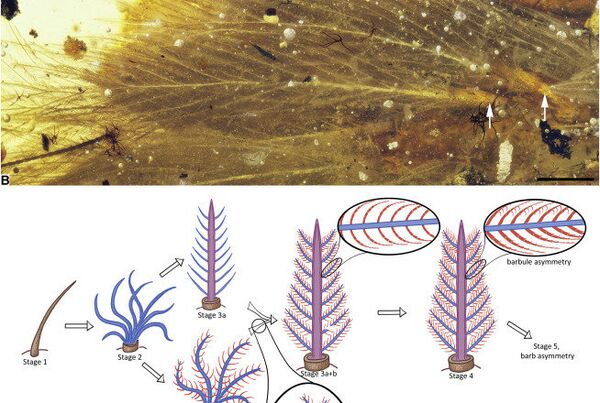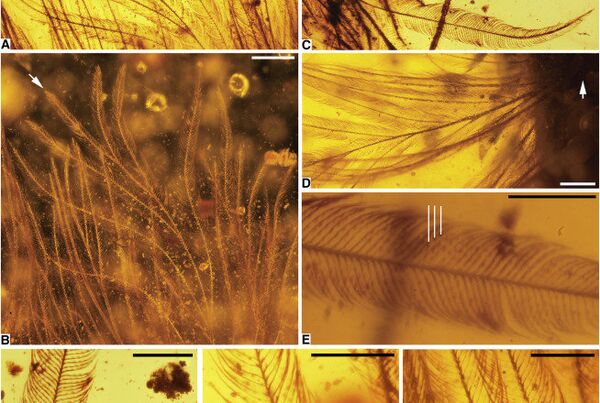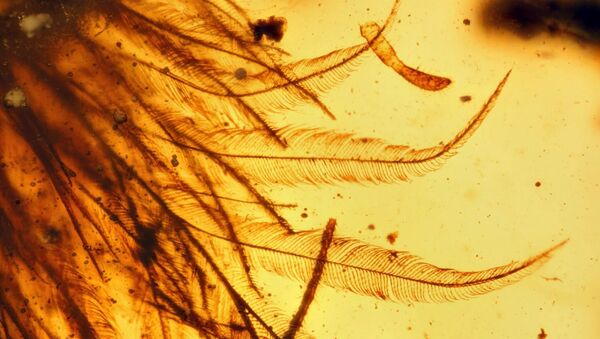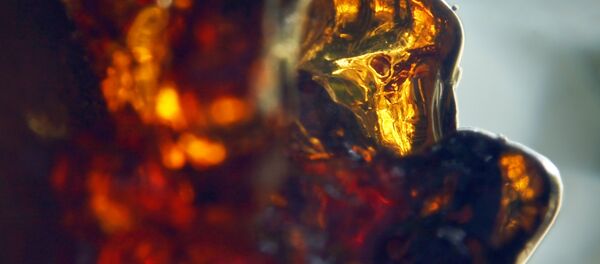A team led by Dr. Lida Xing, of the China University of Geosciences, Beijing, discovered the amber in a market in Myanmar. The sample was in the process of being shaped for use in jewelry, partially damaging the amber, but the tail within remained well-preserved.
The tail, which paleontologists believe to be some 99-million-years old, likely came from a Coelurosaur, a dinosaur group that also includes the fabled Tyrannosaurus Rex. The dinosaur in question was certainly not as large as T-Rex, though, the amber piece is "roughly the size and shape of a dried apricot," according to National Geographic.



The feathered tail cannot belong to a prehistoric bird, the study said, as the vertebrae found within the amber was shown to belong to a surface-dwelling dinosaur. Ryan McKellar, a curator at the Canada's Royal Saskatchewan Museum and co-author of the study, speculated that the feathers "may have served a signaling function or played a role in temperature regulation."
The chance to study dinosaur feathers in detail was an opportunity that Xing’s team was glad to have. The Current Biology report states that it may yield "enriched models of morphological character evolution that help explain major evolutionary transitions in key clades such as theropods, including birds."
Xing’s team previously uncovered feathers belonging to prehistoric birds, also frozen in amber, and also acquired from a market in Myanmar. Those feathers revealed clear similarities between the plumage of prehistoric and modern birds.
Both of these major finds came from the Hukawng Valley, located in Myanmar’s Kachin State. Kachin is under the control of the Kachin Independence Army, who seek autonomy for the Kachin State from the government of Myanmar, in a conflict that has raged since the 1960s.
While it became well-known during the 1960s that dinosaurs are more closely related to birds than they are to lizards, it was not until the 1990s that fossils conclusively revealed that dinosaurs had feathers. By this point 20th-century textbooks, and films like The Lost World, The Land Before Time, and Jurassic Park, had rendered dinosaurs as scaly, featherless creatures in the popular imagination.



